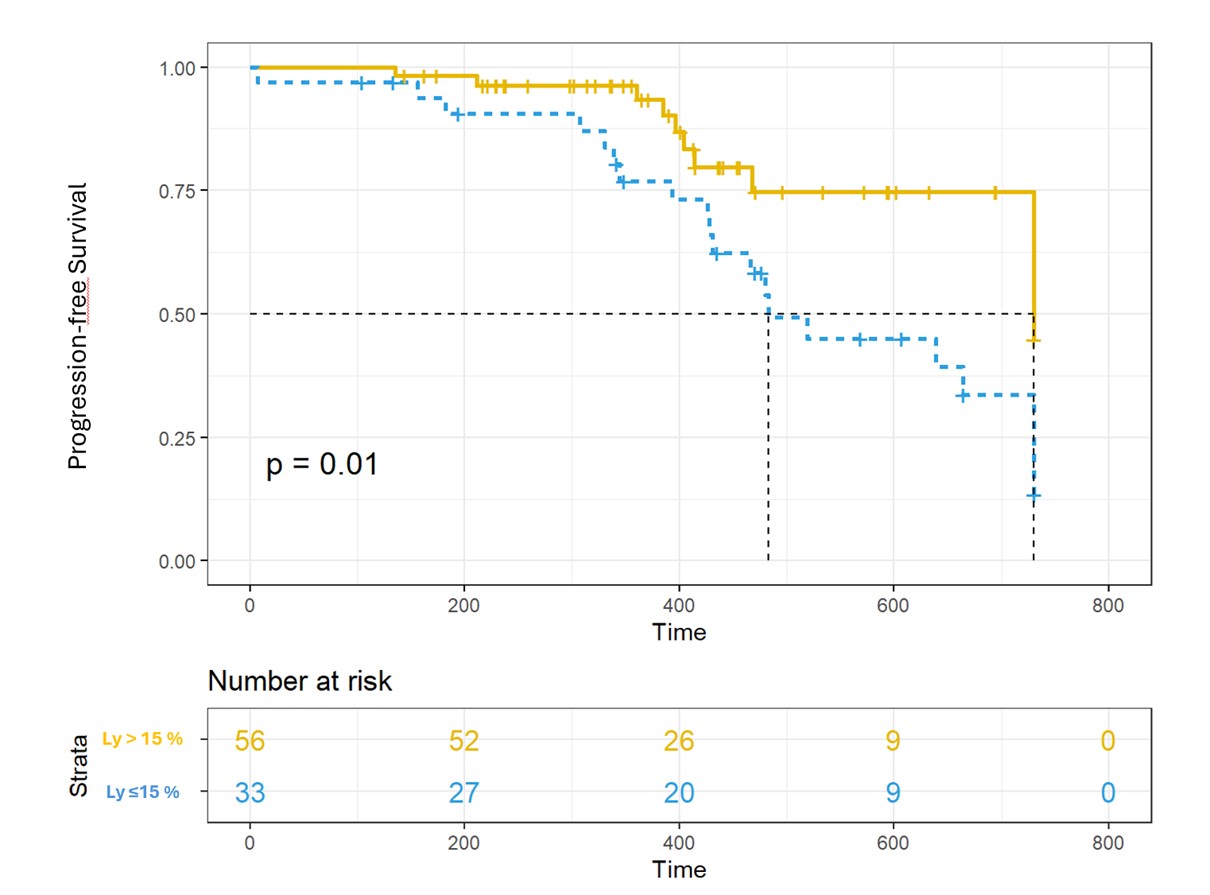Session Information
Session Type: Poster Session C
Session Time: 10:30AM-12:30PM
Background/Purpose: The prognostic value of bronchoalveolar lavage (BAL) in connective tissue disease-related interstitial lung disease (CTD-ILD) is currently underexplored, resulting in a lack of understanding of disease progression and individual risk assessment in this population. Identifying patients with CTD-ILD, who are at risk of worsening disease presents a significant clinical challenge. Therefore, this study aims to examine the potential prognostic use of BAL in distinguishing between patients with progressive and non-progressive CTD-ILD.
Methods: Patients diagnosed with either newly onset or progressive CTD-ILD who underwent BAL were enrolled from rheumatology and pulmonology outpatient clinics. Standard-of-care assessments, including high-resolution computed tomography (HR-CT) and pulmonary function testing (PFT), were conducted at baseline and follow-up visits. The proportion of different cell types present in BAL fluid (BALF) was quantified. The demographic and clinical characteristics of these patients were comprehensively assessed, including age, gender distribution, disease duration, smoking history, extent of lung disease, and treatment modalities. Progression was defined using a composite outcome including the INBUILD criteria (a relative decline in forced vital capacity [FVC] ≥ 10% OR a relative decline in FVC of ≥5% to £10% AND worsening of respiratory symptoms OR an increased extent of fibrosis on HR-CT OR worsening of respiratory symptoms and an increased extent of fibrosis), AND/OR necessity of lung transplantation AND/OR escalation of immunosuppressive therapy AND/OR death attributed to ILD. Multivariable logistic regression analysis was performed to identify risk factors of disease progression based on BALF cell types adjusting for patient and disease characteristics.
Results: We evaluated 100 patients diagnosed with CTD-ILD, encompassing various subtypes including myositis, systemic sclerosis, rheumatoid arthritis, mixed connective tissue disease, and Sjögren’s syndrome (Table 1). We identified 41 patients with progressive ILD. Ratio of Lymphocytes (%) in BALF was significantly increased in patients with progressive CTD-ILD (progressive: 28.8±22.8 vs. non-progressive: 14.3±16.5, p< 0.01). Multivariable logistic regression analysis demonstrated that the proportion of lymphocytes in BALF were an independent determinant of disease advancement (Odds Ratio: 1.05, 95% CI: 1.02-1.08, p=0.002), after adjusting for disease state at baseline (FVC, diffusing capacity of the lungs for carbon monoxide [DLCO]), HR-CT pattern of ILD, CTD diagnosis, and treatment regime (Table 2). Patients with >15% lymphocyte proportion in BALF showed significantly lower progression-free survival (Figure 1).
Conclusion: BALF analysis, particularly the proportion of lymphocytes, may serve as a valuable biomarker in CTD-ILD. It holds promise for individual risk stratification and guiding clinical decision-making in this patient population.
To cite this abstract in AMA style:
Gysan M, Pochepnia S, Prosch H, Lehmann A, Lee S, Renner A, Gompelmann D, Idzko M, Aykara I, Anderle K, Weber P, Kiener H, Bonelli M, Mrak D, Aletaha D, Lechner-Radner H, Kastrati K. Prognostic Value of Bronchoalveolar Lavage in CTD-related Interstitial Lung Disease: An Observational Study [abstract]. Arthritis Rheumatol. 2024; 76 (suppl 9). https://acrabstracts.org/abstract/prognostic-value-of-bronchoalveolar-lavage-in-ctd-related-interstitial-lung-disease-an-observational-study/. Accessed .« Back to ACR Convergence 2024
ACR Meeting Abstracts - https://acrabstracts.org/abstract/prognostic-value-of-bronchoalveolar-lavage-in-ctd-related-interstitial-lung-disease-an-observational-study/



